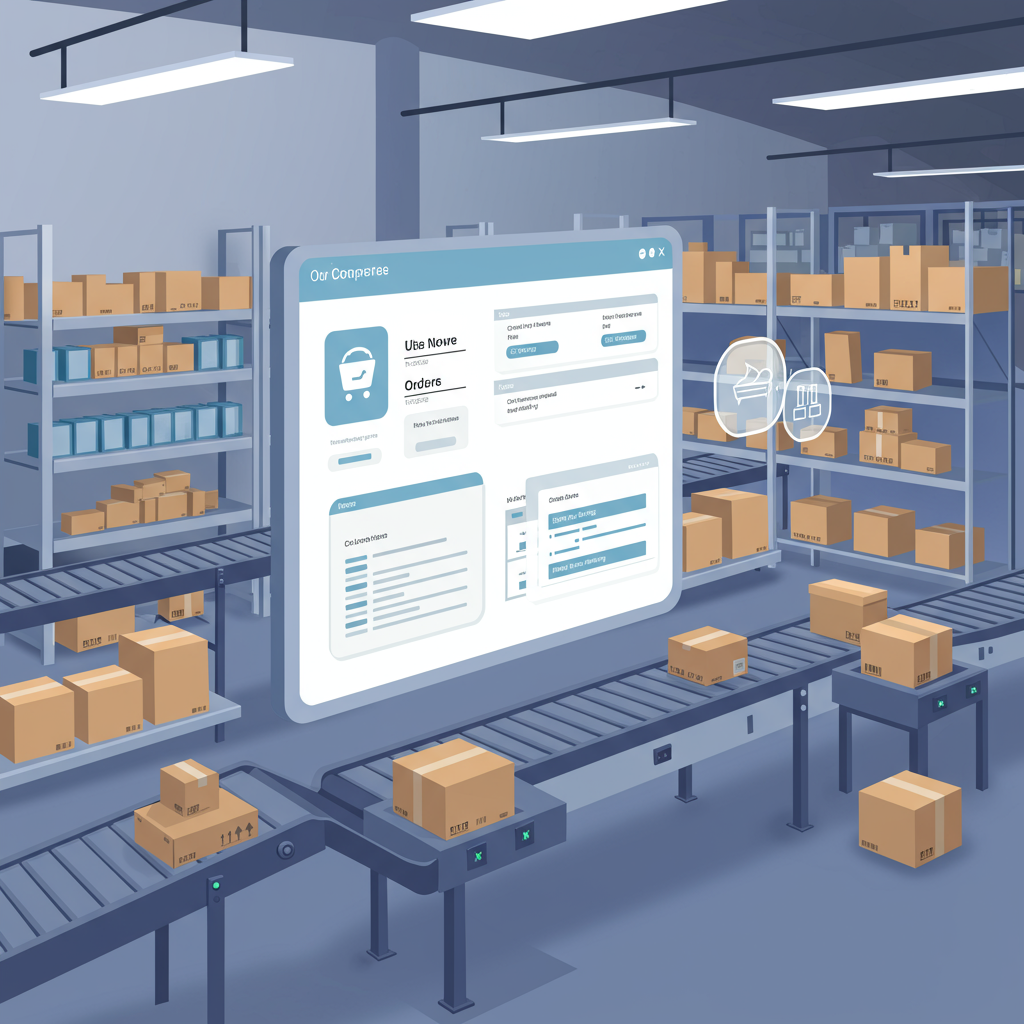Transforming your e-commerce operations from manual grind to seamless efficiency.
As a Shopify merchant, I know the grind. Fulfilling orders manually can quickly become a bottleneck, especially as your business grows. It’s a time-consuming, error-prone process that can eat into your profits and customer satisfaction.
That’s where fulfillment automation comes in. It’s about leveraging technology to streamline and execute various tasks involved in getting an order from your store to your customer’s doorstep, with minimal human intervention.
For me, the biggest win from automation is reclaiming time. Instead of spending hours printing labels, updating inventory, and sending tracking emails, I can focus on product development, marketing, or customer service.
Automation drastically reduces human error. No more mislabeled packages, incorrect addresses, or forgotten tracking numbers. This leads to fewer returns and happier customers.
Imagine a sudden surge in orders. Manual fulfillment would buckle under the pressure. Automated systems, however, are designed to scale, handling increased volume without a proportional increase in effort or staff.
While there might be an initial investment, automation often leads to significant long-term cost savings. You reduce labor costs, minimize shipping errors, and optimize shipping rates.
Faster, more accurate fulfillment directly translates to a superior customer experience. Customers receive their orders quickly and without hassle, building trust and encouraging repeat business.
Let’s break down the key areas where you can implement automation. First up is order processing. Automation can automatically mark orders as paid, send confirmation emails, and even flag suspicious orders for review.
Keeping track of stock levels is crucial, and this is another prime area for automation. Automated systems can update inventory in real-time, prevent overselling, and even trigger reorder alerts when stock runs low.
Shipping label generation is a huge time-saver. Automation can pull order details, calculate shipping rates, and generate shipping labels instantly, often integrating directly with carriers.
Once an order ships, customers want to know where it is. Automated systems can send tracking numbers, update customers on delivery status, and even notify them of delays, all without you lifting a finger.
While not strictly “fulfillment,” automating parts of the returns process, like generating return labels or initiating refunds, can also save immense time and improve customer satisfaction.
Shopify itself offers some basic automation features. You can set up automatic order archiving, send abandoned cart reminders, and manage basic shipping profiles directly within your admin.
However, the real power lies in the Shopify App Store. It’s brimming with solutions. I’ve found apps for everything from advanced shipping rules to comprehensive order management systems.
When selecting an app, consider its integration capabilities with your existing tools, its pricing model, features specific to your needs (e.g., dropshipping, print-on-demand, custom packaging), and the quality of its customer support.
Many automation apps integrate directly with major carriers like USPS, FedEx, UPS, and DHL. This allows for real-time rate calculation, seamless label printing, and automatic tracking updates.
For many merchants, especially those with high volume or limited storage, a Third-Party Logistics (3PL) provider is the ultimate automation solution. They handle everything from warehousing to picking, packing, and shipping.
How 3PLs work is quite straightforward: you send your inventory to their warehouse. When an order comes in on your Shopify store, it’s automatically sent to the 3PL, who then picks the items, packs them, and ships them out on your behalf.
The benefits of 3PLs are significant. They offer economies of scale, often securing better shipping rates than you could individually. They also free up your physical space and mental energy, allowing you to focus purely on growing your brand.
So, how do you go about setting up automation? Step 1: Audit Your Current Process. Before automating, understand your existing manual workflow. Identify bottlenecks, repetitive tasks, and areas prone to error.
Step 2: Define Your Goals. What do you want to achieve? Faster shipping? Reduced errors? Lower costs? Clear goals will guide your automation choices and help you measure success.
Step 3: Research Solutions. Look into Shopify’s native features, explore relevant apps in the App Store, and consider 3PLs if your volume warrants it. Read reviews and compare features carefully.
Step 4: Implement Gradually. Don’t try to automate everything at once. Start with one or two key areas, like label generation or inventory updates, and expand as you get comfortable and see the benefits.
Step 5: Test Thoroughly. Before going live, run test orders. Ensure everything is flowing correctly, from order receipt to tracking notifications. This helps catch any kinks before they impact real customers.
Step 6: Monitor and Optimize. Automation isn’t a set-it-and-forget-it solution. Regularly review your automated workflows, look for areas to improve, and adapt as your business evolves and new tools become available.
Common challenges can include integrating different systems, which can sometimes be tricky. Data discrepancies or unexpected errors can occur, especially during initial setup.
To overcome these challenges, always have a manual fallback plan in place. Don’t hesitate to reach out to app support or your 3PL for assistance. Regular checks and clear communication are key to smooth operations.
My personal takeaway is that implementing fulfillment automation has been one of the best decisions I’ve made for my Shopify store. It’s transformed a stressful, time-consuming chore into a smooth, efficient operation.
It’s allowed me to scale my business without feeling overwhelmed, and my customers are definitely happier with faster, more reliable deliveries. What do you think about this article? Have you tried automating your fulfillment?
If you’re a Shopify merchant looking to grow, save time, and improve your customer experience, exploring fulfillment automation is not just an option—it’s a necessity. Start small, learn, and watch your business thrive.






